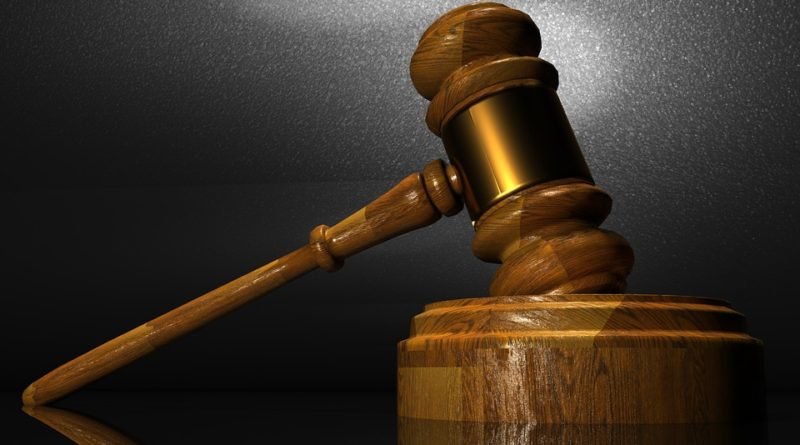Milords on the Bench Have a Choice: To Serve Colonial Law or Constitutional Precept
The law was born out of subjugation in empire and the constitution conceived in the struggle against subjugation. They sit uneasily on a bench etched with the Ashokan emblem of the state.
The ‘majesty’ of the law implies an aura of ‘greatness, dignity, power’; enhanced by popular images of white-wigged and black-robed men looking sternly down upon litigants and lawyers from high benches; evenly punishing the guilty and protecting the innocent.
This power burst forth in India this month. “Detention of accused… is hereby authorised for the (extra) period of 90 days… Inform the accused through jail authority,” said one. “We are, prima facie, of the view that the aforesaid statements… are undermining the dignity and authority of the (court)” said another. “The custodial interrogation of the petitioner is therefore required to ascertain if the use of (her) children in the video was for sexual gratification”; was complemented with, “The explanation… that after the perpetration of the act (rape) she was tired and fell asleep is unbecoming of an Indian woman”.
Are these echoing the trial in 1659 of Prince Dara Shukoh, liberal heir to Mughal Emperor Shah Jahan, by white-bearded and black-robed clergy? Accused by austere younger brother Prince Aurangzeb, counter-claimant to the throne, of being a threat to public peace and an apostate from Islam, their sister Princess Roshanara apocryphally intervened, “Why do we have to listen to all this heresy? Punish the heretic as a warning to all.” Dara was executed. Is this the majestic power accruing to kings, intent on securing thrones against usurpers; empires against people?
The ‘freedom’ of the Indian constitution encapsulates visions of ‘justice, liberty, equality, fraternity’; embedded in a liberated people; wanting multiple freedoms after two centuries of subjugation; a national upsurge that demanded freedom; and the rights they gave themselves.
The Constitution of India.
Fencing in of rights
But even the prescient chairman of the drafting committee for the constitution, Dr B.R. Ambedkar, could not prevent brother law-makers from fencing in those rights. Article 21, the right to life and liberty, permitted the state to deprive citizens of both “according to procedure established by law”. Article 22 gave the right to the accused to be informed of the grounds for detention, but only “as soon as may be”. Article 19, the right to freedom, was amended in 1951 and 1963 to allow the state to “impose reasonable restrictions … in the interests of the security of the State”.
Freedom of religion was guaranteed in Articles 25 and 26, but diluted in 1951 to make it “subject to public order, morality and health”. And the right to judicial remedy, in Article 32, was squeezed in 1984 to give parliament the right to modify, restrict, and abrogate this right for those “in the service of the Union or of a state”. This logic of state security, order, and morality is linked to judicial pronouncements made now.
Thus, there is the law (born out of subjugation in empire) and the constitution (conceived in the struggle against subjugation) and they sit uneasily on a bench etched with the Ashokan emblem of state – much as the pacifist emperor Ashoka may have sat with the sword on his right and the Buddha on his left. When the tension between them comes close to a rupture, lawmakers shrink constitutional freedoms and law-protectors remain silent.
The national emblem of India.
UAPA and undertrial prisoners
Take the Unlawful Activities (Prevention) Act (or UAPA), originally enacted in 1967, using the escape clause in Article 19, to set out ‘reasonable’ restrictions on freedom to detain secessionists, using vague terms like “disclaims, questions, disrupts” India’s sovereignty. But lawmakers were anything but vague in demanding that the accused prove their innocence – a reversal of the international principle that every person is ‘presumed innocent until proven guilty’.
When the Prevention of Terrorism Act was repealed under popular pressure, the UAPA was swiftly amended to include terrorism in its ambit – without properly defining ‘terror’. The prescription of a time limit for the law was also deleted. Another amendment doubled the time for police custody to 30 days, permitted chargesheets to be filed in 90 days, allowed 180 days of judicial custody; but disallowed bail. Yet another amendment added unspecified “threats to economic security” to terrorism. A final amendment, passed in 2019, shifted the focus from terrorist organisations to individuals.
This context of steadily hardening law defines the ‘success’ of UAPA in delaying justice: a thousand arrested every year, hundreds awaiting trial endlessly, and a handful convicted. In 2017, the minister evaded a question in parliament about how many UAPA undertrials were in jail but announced contradictorily, “The government has zero tolerance policy towards terrorism and it does not analyse data of terrorism-related cases.”
Prima facie
But an analysis of the National Crime Records Bureau’s data from 2016 to 2018 shows that for every 10 convicts, there were 34 undertrials; and of the few tried under UAPA, 67% were acquitted in 2016. Does “zero-tolerance” mean keeping people in jail, rather than proving them guilty? The judicial observation that “prima facie a crime has been committed” conceals the morbid fact that ‘prima facie’ means ‘legally sufficient to establish a fact or a case unless disproved’.
If prima facie, the accusation carries conviction, then why does prosecution not begin? Why are 300,000 awaiting trial, constituting two-thirds of the prison population? Why, if there is prima facie evidence, do two-thirds emerge as innocent? And how do prima facie students, journalists, protestors and activists, poets, lawyers, writers and doctors, professors and environmentalists, ‘individually’ terrorise the state so much that it must put them in dungeons?
Milords on the bench have a choice before them: do they serve colonial law, or constitutional precept? The choice they make determines whether the nation moves towards majesty or freedom. Even if they steer contempt law to secure their own institution, will they be able to secure society from rupture? An ideology in India is trying to create a new nation in its own image. The courts may spur this revolution. But will they be able to cope with the epidemic of suspicion, fear, and violence that it is unleashing?
Dunu Roy is with the Hazards Centre, New Delhi.
Source The Wire




